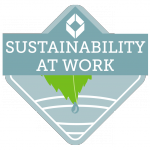
Food Waste in the Supply Chain
Recently, I attended the Global Sustainability Summit hosted by the Grocery Manufacturers Association and the Food Marketing Institute in Boston. Food waste was a major topic at the three-day event. It’s a compelling topic for many reasons – the sheer magnitude of the problem, for starters. The United National Environment Programme (UNEP) estimates that about a third of the food produced globally is wasted. From a waste management perspective, it’s a huge opportunity: according to the US EPA, food waste accounts for 35 million tons, or 21%, of the waste going to landfills and incinerators.
Food waste is also a compelling issue in a couple of other interesting ways. First, while many of the issues in the sustainability and CSR arena are primarily cast as environmental issues (e.g. greenhouse gas emissions) or as social issues (e.g. fair trade), food waste clearly rests on all three legs of the sustainability stool – environmental, financial, and social. The resources used in food production represent significant environmental impacts, the corresponding financial waste contributes to the cost of food, and a significant portion of food waste is edible food, while nearly one in six American households is food insecure. Moreover, there is an immediacy to the problem – perishable food going to waste today while people in the US and elsewhere go hungry. Hunger and food insecurity in a land of plenty are issues that people are more comfortable with in moral terms than they might be with other issues like climate change where the impacts are less tangible or direct, or are measured in parts per million or hundreds of years.
The food waste definitions used by EPA and other governmental and non-governmental organizations usually refer to food scraps or unused food at various processing/preparation stages and food that makes its way to the final consumer but is not consumed. So as staggering as the statistics above are, they do not even capture losses occurring on the farm. And yet, the most memorable image of the conference was a photo of a field of lettuce – leafy green heads everywhere, except for a few patches where lettuces were missing. The photo seemed ordinary enough until Doug Rauch, CEO of The Daily Table, explained what it represented: the lettuces left in the field after harvest, because they were either a bit too small or a bit too large for the box.
Packaging is frequently under scrutiny, and is often perceived as “wasteful” simply because the consumer is left with it after the product has been consumed. From a life-cycle perspective, good packaging preserves the cumulative resource investment embodied in the product, which is typically greater than the resource investment used to make the package. But this lettuce field example brings into focus the fact that a packaging and distribution system can have unintended consequences. In this case, the size or design of a box that protects the lettuces from being wasted due to crushing, wilting or spoilage is causing other lettuces to be wasted as they rot in the field. In many other cases, the specifications for what is acceptable to the buyer may simply be too narrow. Either way, the inputs like water, energy, land, nutrients, and labor are wasted, as is usable food.
The photo is also a great illustration of how the nature of food waste is completely different at various points in the supply chain. The work by the Food Waste Reduction Alliance has helped to quantify and illuminate how each of its member groups (food manufacturers, food retailers, and restaurants) has a very different profile when it comes to types and quantities of food waste. Some of those may look like “waste” and some may just look like food that is being wasted. For example, typical food waste arising at a food manufacturing plant may be peelings and trimmings, while at a supermarket, it often consists of expired or damaged food, often in packages, and at a restaurant, it includes both back-of-house (kitchen) waste and front-of-house waste (food that has been served).
Just as the waste looks different at each link in the chain, the solutions won’t be one-size-fits-all, either. Addressing this systems problem will require many solutions, tools, and skills, including expanded infrastructure, innovative technology, supply chain coordination, overcoming real and perceived regulatory hurdles, and creative marketing and education to change behavior.
Connect with Catherine: LinkedIn

